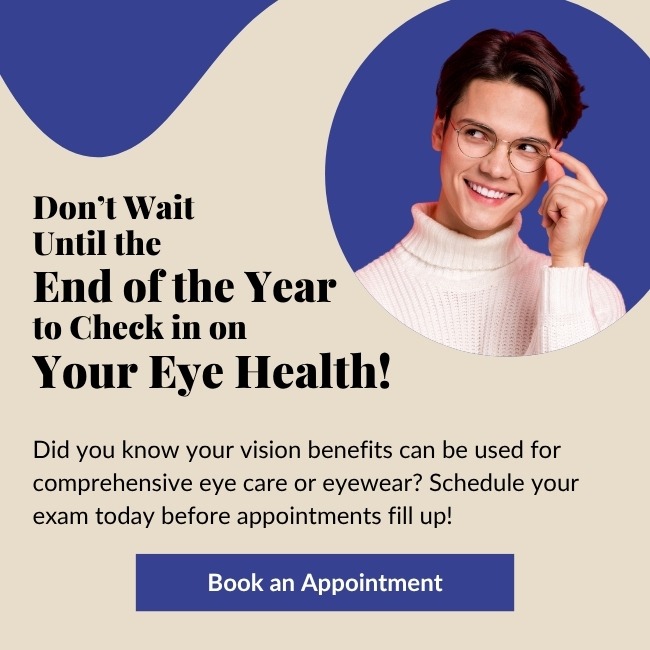Insurance benefits and healthcare coverage can be very confusing. The language isn’t always clear, and sometimes you need to speak with a benefits specialist or human resources representative through your employer just to navigate what is covered and what isn’t. In general, there are a few things you should know about vision insurance vs. health insurance and how they may help cover your eye care needs.
There are many options for vision insurance providers including EyeMed, Humana, VSP and more. Of course they all have their own specific coverage benefits and amounts, but in general they cover routine care like getting an annual exam and getting glasses or contact lenses. They will pay all or part of the cost of your exam and eyewear and give you a timeline of how often you are allowed to get a covered exam or eyewear allowance. You are certainly allowed to order additional contact lenses or glasses, or to get exams more frequently, but the insurance provider will only cover a predetermined amount based on their annual or bi-annual timeline. Usually covered individuals pay a co-pay or a percentage of the cost of an exam and any associated eyewear.
The difference between this and health insurance is that health insurance generally covers only eye care in relation to a medical condition. For instance, if you need an eye exam because of cataracts, dry eyes, complications from diabetes, or in relation to diagnosed high blood pressure, then your health insurance will usually cover the eye care. You don’t need vision insurance for this coverage, but you may be able to use your health insurance to cover your medical eye condition or eye care needs and then use your vision insurance to cover your glasses or contact lenses.
In addition to covering eye care for medical conditions, health insurance will typically cover care if you experience an eye injury or develop an eye disease.
The benefits of having optional vision insurance are that you can save a lot on eye care, and the plans are usually pretty inexpensive—typically just $12–$30 per month. Even if your employer doesn’t help cover part of your premium, many people like to buy the coverage to use for annual exams and new eyewear at a greatly reduced cost. Also, if you find that you’re not visiting your eye doctor regularly, paying for coverage is a nice way to make yourself accountable and schedule your visit to use your vision benefits.
Talk to your employer if you have questions about any employer-provided health care coverage or vision benefits. See an eye care professional to find out if your vision benefits are accepted, and how you can use benefits to save on your next eye exam or eyewear purchase.



